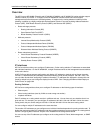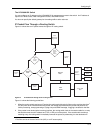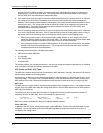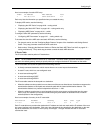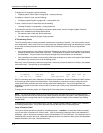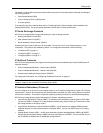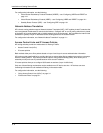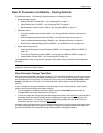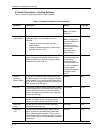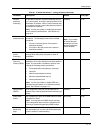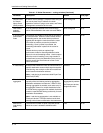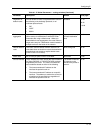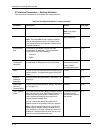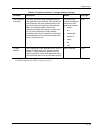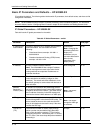
Installation and Getting Started Guide
IP Global Parameters – Routing Switches
Table 6.1 lists the IP global parameters for routing switches.
Table 6.1: IP Global Parameters – routing switches
Parameter Description Default See page...
IP state The Internet Protocol, version 4 Enabled
Note: ou cannot
disable IP.
n/a
IP address and
mask notation
Format for displaying an IP address and its network
mask information. You can enable one of the
following:
• Class-based format; example: 192.168.1.1
255.255.255.0
• Classless Interdomain Routing (CIDR) format;
example: 192.168.1.1/24
Class-based
Note: hanging this
parameter affects the
display of IP
addresses, but you
can enter addresses in
either format
regardless of the
display setting.
6-80
Router ID The value that routers use to identify themselves to
other routers when exchanging route information.
OSPF and BGP4 use router IDs to identify routers.
RIP does not use the router ID.
The lowest-numbered
IP address configured
on the lowest-
numbered virtual
routing interface (VE).
If no VE is configured,
then the lowest-
numbered IP address
configured on the
device.
6-25
Address
Resolution
Protocol (ARP)
A standard IP mechanism that routers use to learn
the Media Access Control (MAC) address of a device
on the network. The router sends the IP address of a
device in the ARP request and receives the device’s
MAC address in an ARP reply.
Enabled 6-27
ARP age The amount of time the device keeps a MAC address
learned through ARP in the device’s ARP cache. The
device resets the timer to zero each time the ARP
entry is refreshed and removes the entry if the timer
reaches the ARP age.
Ten minutes 6-28
Proxy ARP An IP mechanism a router can use to answer an ARP
request on behalf of a host, by replying with the
router’s own MAC address instead of the host’s.
Disabled 6-29
Static ARP
entries
An ARP entry you place in the static ARP table.
Static entries do not age out.
No entries 6-29
Time to Live
(TTL)
The maximum number of routers (hops) through
which a packet can pass before being discarded.
Each router decreases a packet’s TTL by 1 before
forwarding the packet. If decreasing the TTL causes
the TTL to be 0, the router drops the packet instead of
forwarding it.
64 hops 6-32
Y
C
6 - 10



